Low Phosphorus Meats For CKD Patients
Living with chronic kidney disease (CKD) can be difficult. Many CKD patients need to monitor what they eat and drink in order to stay healthy, including limiting their intake of phosphorus-rich foods like red meat.
Fortunately, there are plenty of low phosphorus meats that CKD patients can enjoy while still sticking to a renal diet food list. In this article, we'll discuss the importance of maintaining a low phosphorus diet for CKD patients and provide some great options for delicious low phosphorus meat dishes.
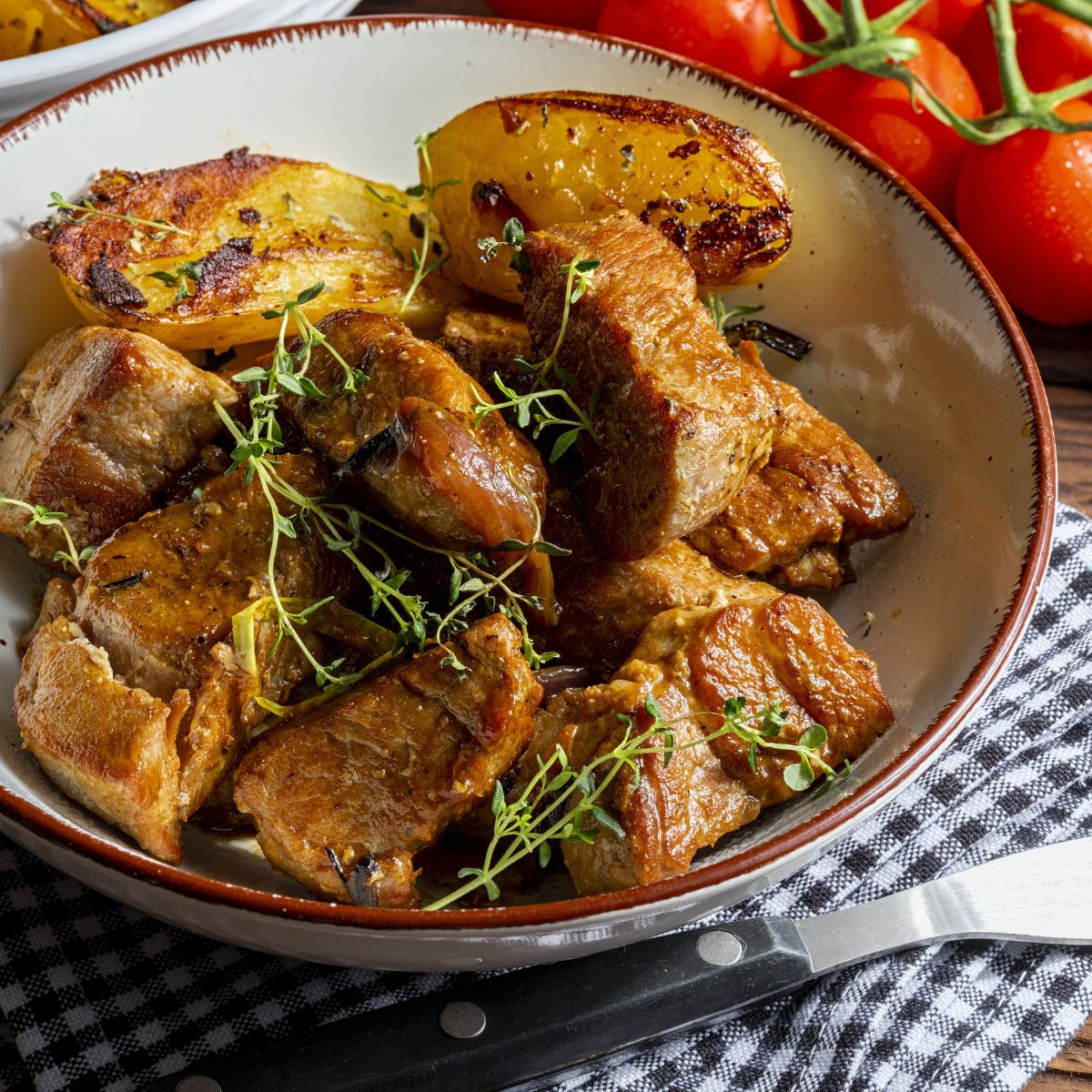
The kidneys play an important role in our bodies. Among other things, they filter out waste products from the bloodstream and help regulate electrolyte levels. When someone's kidneys aren't working properly due to CKD, these functions don't occur as efficiently or effectively as normal.
As such, many CKD patients must make adjustments to follow a kidney dialysis diet meal plan to ensure that their bodies get the proper nutrients without overloading them with unnecessary substances.
Phosphorus is one such substance that needs to be monitored carefully by those living with CKD - too much phosphorus can increase their risk of serious complications.
Fortunately, there are still plenty of tasty meals available that won’t overload your body with unhealthy amounts of phosphorus.
With careful monitoring and planning, you can find ways to incorporate delicious low phosphorus meats into your diet so you can maintain good health even while living with CKD.
Jump to:
- Phosphorus And The Kidneys
- Sources Of Dietary Phosphorus
- Factors Affecting Phosphorus Levels In Food
- Nutritional Needs For CKD Patients
- Recommended Low-Phosphorus Meats
- Benefits Of Low-Phosphorus Meats For CKD Patients
- Preparation Tips To Reduce Phosphorus Content
- Alternatives To Meat For Lowering Phosphorus Intake
- FAQs about Low Phosphorus Meats
- A Low Phosphorus Diet Without Giving Up Meat
Phosphorus And The Kidneys
The kidneys are a vital organ for the body, and they play an important role in maintaining balance within the body. One of its many tasks is to filter out unwanted substances from our blood stream - including phosphorus.
When too much phosphorus accumulates in the bloodstream, it can cause severe damage to the kidney as well as other organs. This is why those suffering from CKD must carefully monitor their intake of foods high in phosphorus and make sure to include low-phosphorus meals in their diet.
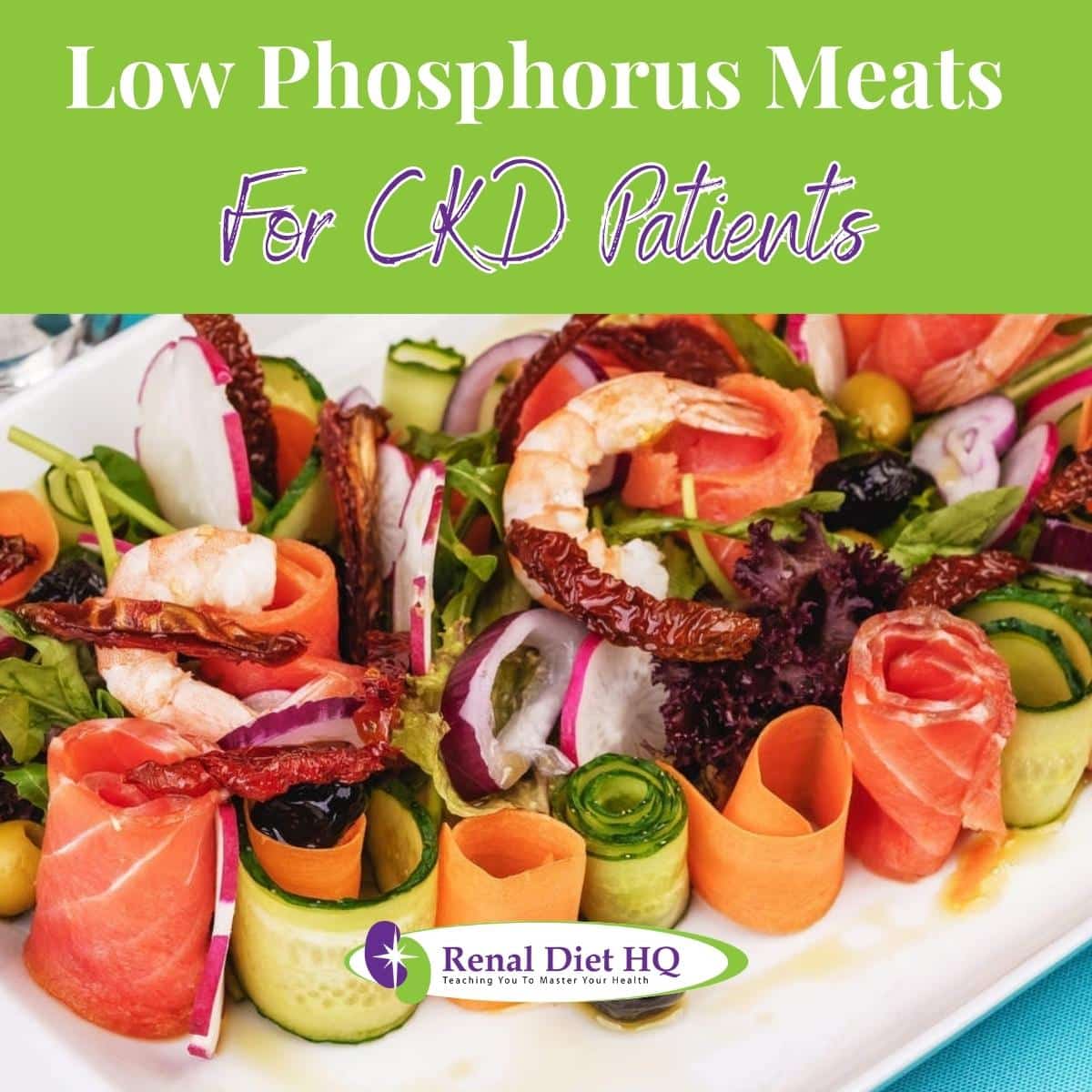
People with CKD need to limit their intake of phosphorus because when levels rise above normal limits, this causes an increase in calcium excretion which can lead to weakened bones or even fractures.
High levels of phosphorus also trigger parathyroid hormone release, resulting in mineral imbalance that further weakens bones and joints.
In addition, high phosphate concentrations have been associated with cardiovascular problems such as atherosclerosis and calcification of arteries.
Low phosphorus foods and diets are essential for people with CKD to reduce risks associated with mineral imbalances caused by elevated phosphorus levels.
While eating plenty of fresh fruits and vegetables will help you get all the nutrients your body needs without consuming excessive amounts of phosphorus, there are still some meats that may be included in your diet, but these should be chosen carefully.
Knowing which types of meat contain lower amounts of phosphorus helps ensure that kidney health is maintained while providing necessary nourishment for daily life activities.
For More Recipes and Ideas --->> Get Your Free Meals and Recipes That Are Perfect for Pre-Dialysis Diets, Pre-Dialysis with Diabetes, or Dialysis Diets.
Sources Of Dietary Phosphorus
It is essential for people with CKD to keep an eye on their dietary phosphorus intake. To help CKD patients maintain a balanced diet without consuming excess phosphorus, it is important to consider low-phosphorus sources of nutrition.
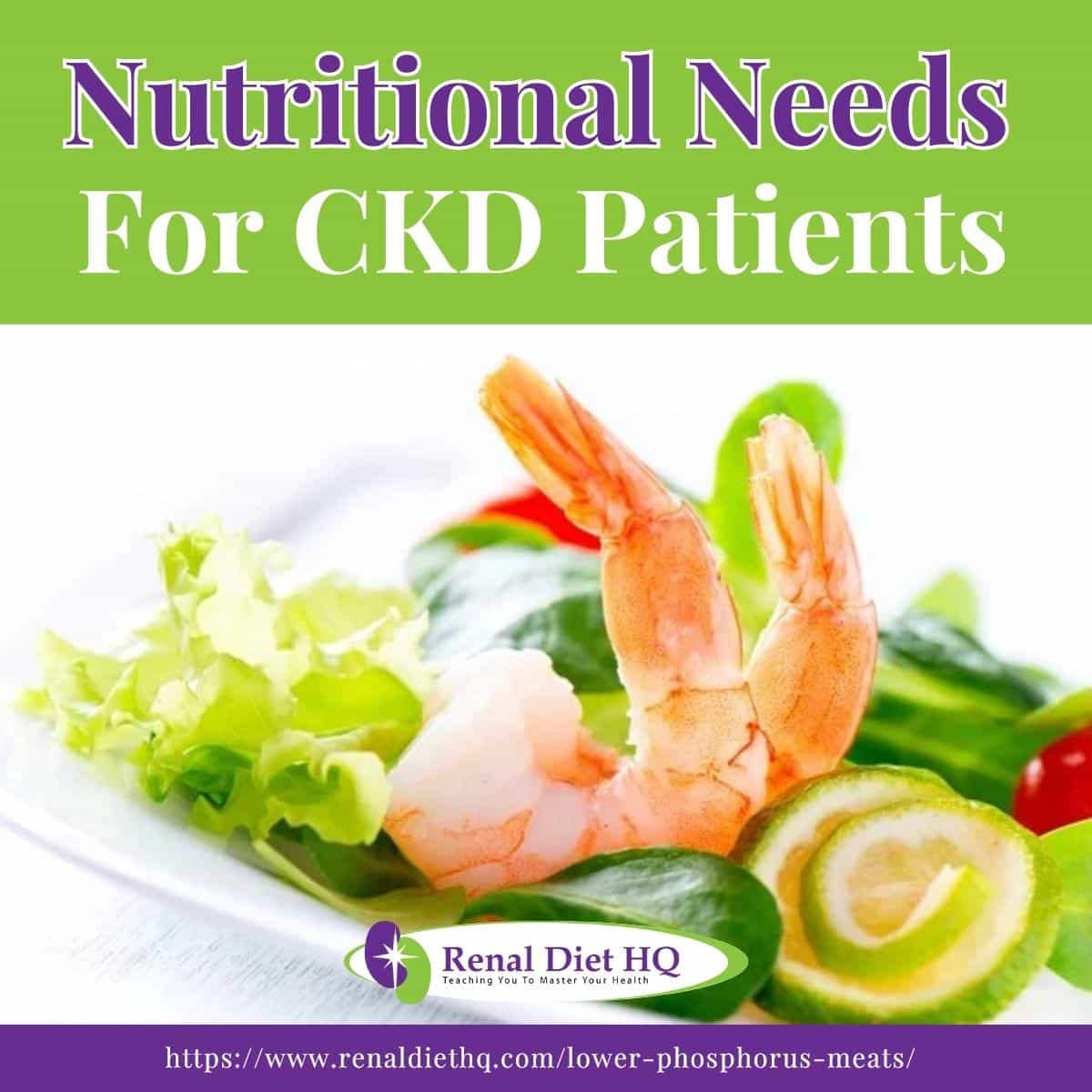
However, let’s first look at the foods high in phosphorus. This is important in maintaining a low phosphorus diet as this will help you know which food to avoid. Sources of phosphorus include meat, fish, dairy products, nuts, legumes and whole grains.
All of these food items contain a significant amount of both calcium and phosphorus which can cause an increase in blood phosphate levels if consumed too often or in large quantities.
When evaluating food products for phosphorus content, take note of the food label and compare it against other brands or types of similar products. It may be possible to find substitutes that offer no extra phosphorus content than your initial choice.
For instance, some popular snacks such as chips may have variations with lower levels of dietary phosphorus compared to traditional versions.
For those looking for healthy meal ideas, there are many options available when selecting low-phosphorus meats. There is a whole Comprehensive Healthy Renal Diet Grocery List Guide available to those who would like it.
These include chicken breast meat with skin removed, freshwater fish like tilapia (is tilapia good for kidney disease?) and tuna canned in water, turkey breast cutlets without skin or fat trimming, extra lean ground beef (93% lean), pork tenderloin medallions and shrimp peeled before cooking.
When shopping around at markets or supermarkets, keep an eye out for items labeled “low sodium” which could also point towards reduced amounts of dietary phosphorus, too!
Eating right is one way CKD patients can manage dietary phosphorus consumption while still maintaining a balanced diet. However, they should always consult with their doctor first if they have any questions about specific nutrients contained within a certain product.
This will provide peace of mind knowing that meals are tailored specifically to each person’s personal health requirements.
Factors Affecting Phosphorus Levels In Food
When it comes to maintaining low phosphorus levels in the body, certain foods are more beneficial than others. In general, foods high in phosphorus can be detrimental for CKD patients and should therefore be avoided or greatly reduced.
Aside from foods that naturally contain high levels of this nutrient, there are also other factors that affect phosphorus levels in food, as well as the way phosphorus is absorbed by the body. These include the following:
- Cooking Methods: Boiling, steaming and baking are considered the best techniques to reduce phosphorus content because they do not significantly alter its nutritional value. Frying on the other hand tends to break down proteins that bind with phosphorus molecules thus increasing their availability for absorption.
- Processing Techniques: The process of refining or processing some types of food such as cereals may also result in increased levels of available phosphorus due to leaching out from the bran layer during milling operations. Furthermore, adding preservatives to packaged meals has been known to add additional amounts of phosphorus into the product itself making them less desirable choices for those looking to maintain lower phosphate levels.
- Use of Phosphorus-Binding Drugs: It is important to note that taking medications designed specifically for binding with dietary phosphates (such as sevelamer) can also help reduce overall intake when used alongside a low-phosphorus diet plan. This combination allows CKD patients to still enjoy many foods while reducing absorption rates through drug therapy interventions such as phosphorus-binding drugs.
By understanding what factors influence phosphorus levels in various food sources individuals suffering from chronic kidney disease can better manage their condition better and make informed decisions about how much is safe for them to consume each day.
With careful planning and monitoring, meals can be enjoyed by people with CKD without fear of complications from excess nutrients like phosphorus. Pay attention to low phosphorus foods, so that you know what you can consume on this diet.
Nutritional Needs For CKD Patients
Having discussed the factors that affect phosphorus levels in food, we now turn to nutritional needs for people with kidney disease. There are many benefits of a renal diet, starting with the nutritional value for CKD patients.
A renal diet is necessary to regulate and monitor daily intake of minerals like phosphorus. Phosphorus restriction is key in managing a person's health with CKD, as too much can cause an imbalance leading to further complications.
CKD nutrition requirements depend on several things: the stage of kidney disease, what other medical issues are present (such as diabetes or increased blood pressure), and individual preferences.
In general, for pre-dialysis patients, this diet should be low in sodium (salt), potassium, protein, and phosphorus — all of which are vital components of healthy eating but must be limited if one has CKD. In patients maintained with dialysis, this general rule is applicable, except increasing protein intake.
Meat products should be avoided or limited due to their high content of phosphorus. Low-phosphorus meats that may be consumed by someone with CKD include beef tenderloin, bison steaks, turkey breast without skin or bone, chicken breast without skin or bone, pork chops without bones, and fish such as cod filet and grouper.
Recipes to check out:
To reduce phosphorus intake even more while still getting adequate amounts of protein, try incorporating plant-based proteins such as beans into your meals instead of relying solely on animal sources.
Eating smaller portion sizes more often throughout the day also helps stabilize blood sugar levels and control weight gain associated with CKD.
Moreover, renal patients have special vitamin and mineral needs that differ from those with healthy kidneys. They require more calcium than normal people because phosphate binders used to lower phosphorus levels deplete calcium levels in the body. This is important to note because calcium is crucial in bone health especially for people with advanced kidney disease.
Additionally they need extra vitamins B6 & D3 supplementation due to impaired absorption from kidneys not functioning properly anymore.
Making sure that nutrients are maintained in safe levels requires regular follow up visits with a doctor who can adjust medications accordingly to keep you at your healthiest and prevent ckd progression.
Recommended Low-Phosphorus Meats
A diet rich in phosphorus can put stress on a patient's kidneys, so it is important to monitor their intake of this mineral. Since meat is notorious for having high phosphorus levels, it is crucial to know that there are recommended low-phosphorus meats that may be safely consumed by CKD patients. Here are some examples:
Meat
- Beef pot roast: Three ounces, cooked = 155 mg of phosphorus
- Skinless chicken breast: Three ounces cooked = 190mg phosphorus
- Lean ground beef (90%): Three ounces cooked = 170mg phosphorus
Fish
- Canned tuna: Three ounces cooked = 130mg phosphorus
- Mahi Mahi: Three ounces cooked = 215mg phosphorus
- Shrimp: Three ounces cooked = 120mg phosphorus (kidney friendly shrimp recipes)
Other examples of low phosphorus meats include turkey sausage, beef jerky, and pork rinds which can provide essential nutrients while minimizing the amount of phosphorus ingested.
These items contain vitamins such as B12, zinc, iron, and thiamine which benefit overall bodily function. Additionally, they provide quick energy boosts without overloading your body with excess phosphorus or sodium.
Since most meats have high amounts of phosphorus compared to other food groups, switching out higher phosphorus meat options for lower ones is one way to keep track of your daily nutrient intake while still achieving adequate nutrition.
Even though limiting phosphorus content may be necessary for people with kidney disease, that doesn't mean you have to give up foods like meat altogether!
Low-phosphorus meals can still be delicious especially when seasoned with low-sodium herbs and spices and served with side dishes such as vegetables or fruits.
Adding variety will also make them more enjoyable. With careful monitoring and mindful meal planning, CKD patients don't need to sacrifice flavor or satisfaction from a kidney friendly diet.
Benefits Of Low-Phosphorus Meats For CKD Patients
Low-phosphorus meats provide kidney-friendly proteins that can help maintain a healthy balance in their diet. Eating these types of meat can also support overall CKD-related health, as the phosphorus found in them is significantly lower than other sources such as red meats and dairy products.
These foods also contain essential nutrients like iron and zinc which assist with tissue repair and wound healing while promoting optimal energy production and growth. Make sure you take a second to look at the dialysis nutrition guidelines.
They’re also packed with vitamins B6 and B12, important components that play key roles in nerve function, cell metabolism, immune system strength, bone health, blood sugar regulation, brain development and more.
Overall, low-phosphorus foods especially low-phosphorous meats offer a variety of benefits for those living with CKD. Not only do they help keep dietary phosphates in check; they also provide vital nutrients needed by CKD patients who may otherwise struggle to get enough from other food sources.
Indeed, low phosphorus options are an excellent choice for any CKD patient seeking alternative sources of protein.
Preparation Tips To Reduce Phosphorus Content
As previously mentioned, cooking affects phosphorus levels in food. Hence, cooking techniques are an important way to reduce the amount of phosphorus in a meal. Boiling, steaming or stir-frying meats can help lower their phosphorus content.
This is because boiling and steaming use little to no oil while stir-frying uses just enough to cook the meat without adding extra calories or fat. Additionally, broiling or these creative grilling ideas can also be used as long as any added fats or oils are kept low.
When it comes to seasonings, try using herbs and spices that don't contain phosphorus such as garlic powder, oregano, basil, paprika and cumin. These can add flavor without having to worry about high levels of phosphorus in your food.
You may also want to consider using some phosphorus-free dressings for salads and sandwiches like lemon juice or vinegar-based dressings which will provide flavor without increasing the overall phosphate level in a dish.
Finally, store-bought meals such as frozen meals and frozen dinners can be another convenient option for those on kidney diets but you need to read ingredient lists carefully before buying them since many brands often have higher than expected amounts of phosphates in them.
In general try to avoid processed frozen meats and deli meats. If possible, opt for fresh produce over convenience foods so you know exactly what’s going into your meals. With this combination of cooking techniques, use of seasonings, and careful label checking, you'll help ensure that your meals remain low in phosphorus.
Alternatives To Meat For Lowering Phosphorus Intake
There are plenty of delicious and nutritious alternatives to meat for patients with chronic kidney disease who wish to lower their phosphorus intake. From the crunchy nuts, legumes, and grains to plant-based proteins available today, there's something that will suit your taste and nutritional needs.
Vegetarian meals are a great way to get in all the essential nutrients while being mindful of your dietary restrictions. Legumes, such as beans and lentils, provide protein without all the fat or cholesterol found in meats.
Whole grains like quinoa (is quinoa good for kidney disease?), oats, and brown rice can be cooked up quickly into tasty dishes that will leave you feeling energized and satisfied. Nuts such as almonds, walnuts, cashews and pistachios are loaded with omega-3 fatty acids which have been shown to help reduce inflammation associated with CKD.
Eating non-meat sources of protein doesn't mean sacrificing flavor either. There are countless recipes out there waiting to be discovered — from eggplant parmesan to tofu stir fry — that put a fresh spin on traditional favorites.
By taking advantage of these options, we can ensure our diets not only meet our health needs but also bring flavor to meal times!
FAQs about Low Phosphorus Meats
When it comes to chronic kidney disease CKD, daily phosphate intake is a major factor in maintaining health. Knowing the recommended amount of phosphate for CKD patients is essential for their long-term treatment plan and overall well-being.
Specific requirements may vary per patient due to the complex nature of this disease. Generally speaking, however, most experts agree that CKD patients should aim to limit their phosphate intake to 800mg per day or less.
This recommendation applies not only to those with various stages of chronic kidney disease but also those who are just beginning to show signs of decreased kidney function.
Additionally, some doctors may recommend even lower levels depending on an individual's specific case and other factors such as age and dietary habits.
Ultimately, understanding how much phosphorus your body needs can help you make smart decisions about nutrition and healthy diet choices that support your overall health goals.
With the right guidance from your healthcare team, including periodic blood tests if needed, you can monitor your progress and better manage your conditions.
Reducing your consumption of red and processed meats can help in lowering your phosphorus intake, but there are also other low-phosphorus alternatives and other dietary restrictions you can try.
It's true that limiting certain proteins like beef, pork, dark chicken, salmon, tuna and ham will significantly lower your daily phosphate intake. However, alternative proteins such as turkey breast or white fish provide a great low-phosphorus option for protein sources in your kidney diet.
Additionally, plant-based proteins such as tofu and tempeh are also excellent low-phosphorus alternatives if you're looking for vegetarian renal diet recipes.
Another strategy to reduce your daily phosphorus intake is by restricting foods high in phosphorus additives such as dairy foods and baked goods.
In addition to avoiding these types of food items altogether, be sure to check nutrition labels carefully when selecting packaged items so you know what exactly is going into them—especially if phosphorus levels aren't listed directly on the label itself.
In spite of popular belief that meat should be completely eliminated from someone's diet who has CKD, there are still plenty of dietary measures one can take to help manage phosphorus consumption without giving up meat altogether.
Alternatives with low phosphorus levels exist within both animal and vegetable product options.
So no matter what kind of diet you prefer or have been prescribed due to CKD complications –it’s possible to find a nutritious meal plan fits your needs and preferences.
When it comes to reducing phosphorus levels, diet alone may not be enough. Phosphorus-lowering medications are one option for those looking for a way to control their CKD phosphorus levels.
These medicines work by blocking the absorption of dietary phosphate in the gut, thus preventing excess amounts from entering into the bloodstream.
Depending on your specific condition and needs, these medications may be prescribed alongside other therapies such as dialysis or lifestyle modifications including restricted intake of certain foods high in phosphorus.
It is important to note that while taking these medicines can assist in lowering phosphorus levels, they do come with potential side effects which you should discuss with your nephrologist (kidney doctor) before starting treatment.
Additionally, if you're already following a low-phosphorus diet and still struggling to reduce your phosphorus levels then additional tests might need to be done to identify any underlying causes.
By using both dietary modifications and appropriate medication where indicated, it is possible for people living with CKD to achieve better phosphorus control over time.
If you think that you would benefit from taking a medicine designed specifically to reduce your phosphorus levels then make sure to speak with your healthcare provider about what options are available and how they could fit into your overall care plan.
Are There Any Potential Risks Associated With A Low-Phosphorus Diet?
A low-phosphorus diet can be incredibly beneficial for those suffering from CKD, but there could also be long-term risks associated with such a drastic change in eating habits. The longer you consume low phosphorus foods, the easier it gets!
It is easy to get caught up in the benefits of a low-phosphorus diet and overlook potential drawbacks when nutrient adjustments are not properly guided:
1. Restrictive food options that may lead to nutritional deficiencies
2. Increased risk for osteoporosis due to lack of calcium intake
3. Imbalance between essential minerals like phosphorus and magnesium levels
4. Possible increase in other medical complications due to dietary changes
When considering these risks, it's important to weigh them against possible positive outcomes of following such a strict regimen, namely improved heart health, decreased inflammation, more energy throughout the day, and ultimately better overall quality of life.
Ultimately, consulting with your healthcare provider before making any major changes to your eating habits is always the best course of action when dealing with something as serious as kidney disease.
The key takeaway here is that while low-phosphorus diets provide many extraordinary advantages for those living with CKD, they should never be taken lightly or without proper guidance and supervision from an experienced physician who understands all potential long-term effects.
Making sure that each meal contains balanced nutrients is essential to maintaining good health for individuals struggling with kidney disease.
For those who are following a plant-based kidney diet, it can be especially challenging to find suitable foods that meet all nutritional criteria. Fortunately, there are several options available for vegans looking for sources of low-phosphorus protein.
Legumes such as chickpeas and lentils have relatively low levels of phosphorus compared to animal products. Other grains like quinoa renal diet and brown rice also offer good amounts of essential amino acids without being too high a source of phosphorus content.
In addition, nuts and seeds such as almonds, walnuts, pumpkin seeds, and sunflower seeds provide beneficial nutrients in addition to providing some protein.
When preparing these items at home or eating them out at restaurants, it is important to look closely at the nutrition facts label or menu item description to ensure they are low in phosphorus content.
Additionally, certain types of beans like kidney beans, pinto beans, black beans, or green beans might need to be cooked longer than others when preparing meals so that they become easier to digest while still retaining their nutrient value.
With careful planning and consideration of various dietary requirements, it is possible to obtain adequate amounts of protein from vegan sources without going over on phosphorus intake.
A Low Phosphorus Diet Without Giving Up Meat
It is clear that a low-phosphorus diet can be beneficial for CKD patients, as it reduces the buildup of phosphorus in their body. This can help reduce symptoms and improve overall health outcomes.
There are several ways to reduce phosphorus intake, including limiting animal proteins like red meat, poultry, and fish. Additionally, there are medical treatments available to further reduce phosphorus levels if needed. However, it's important to consult your physician before making dietary changes.
Those wanting to maintain adequate protein intake on a low-phosphorus diet may find vegan sources such as quinoa or beans helpful. Knowing the best beans for kidney disease is easy with the right list.
And for non-vegans, low-phosphorus meats are a great option for keeping your phosphorus levels in check without sacrificing animal-based protein sources altogether.
Trying out these options can help improve both your health and quality of life!


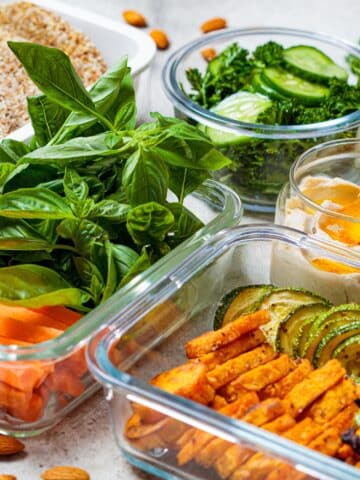
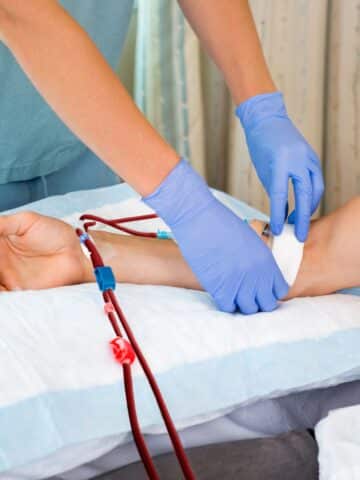
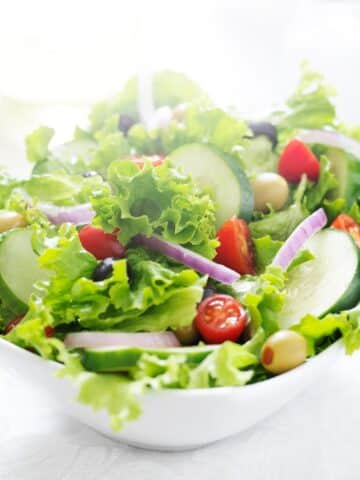
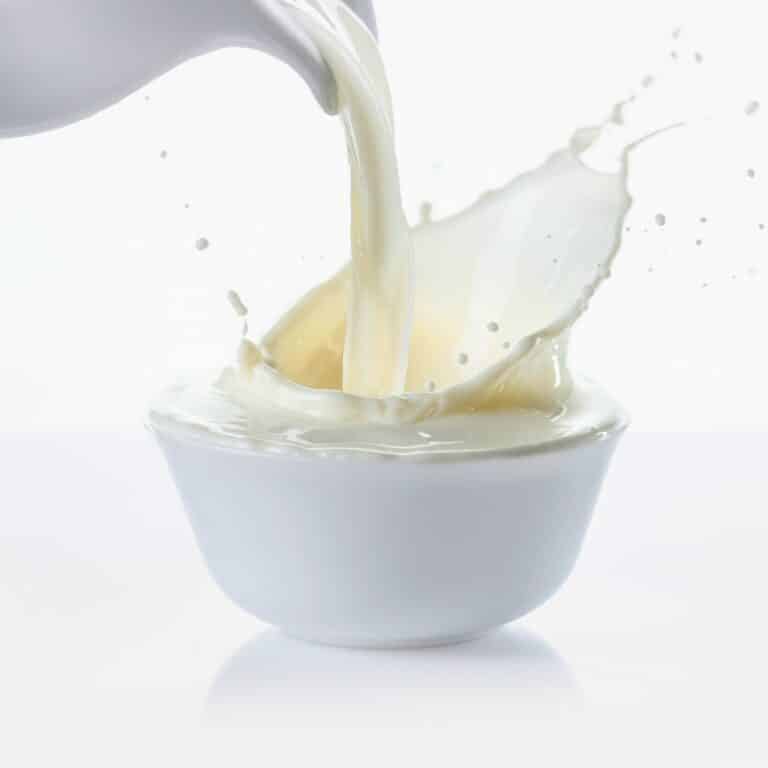
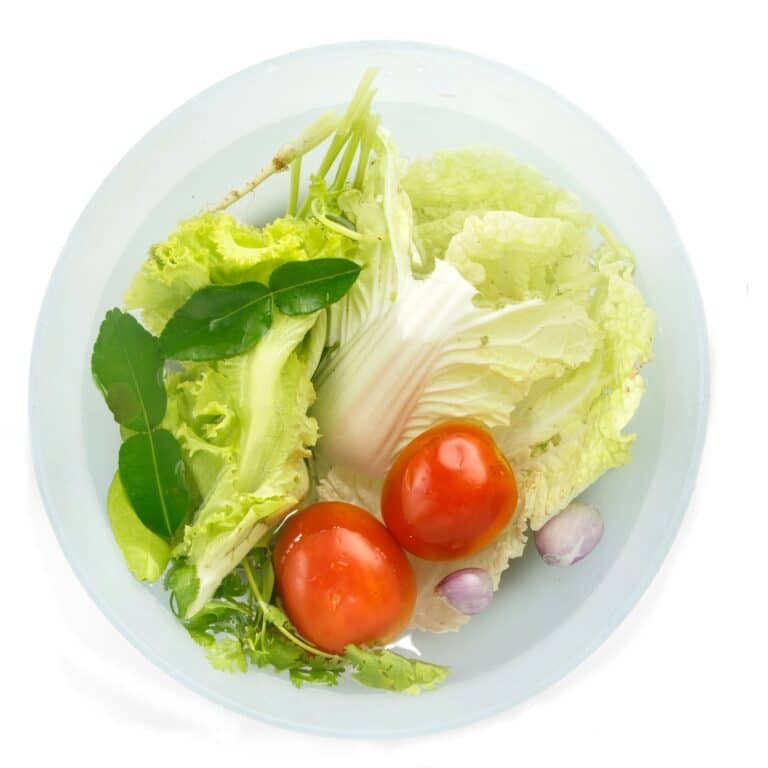
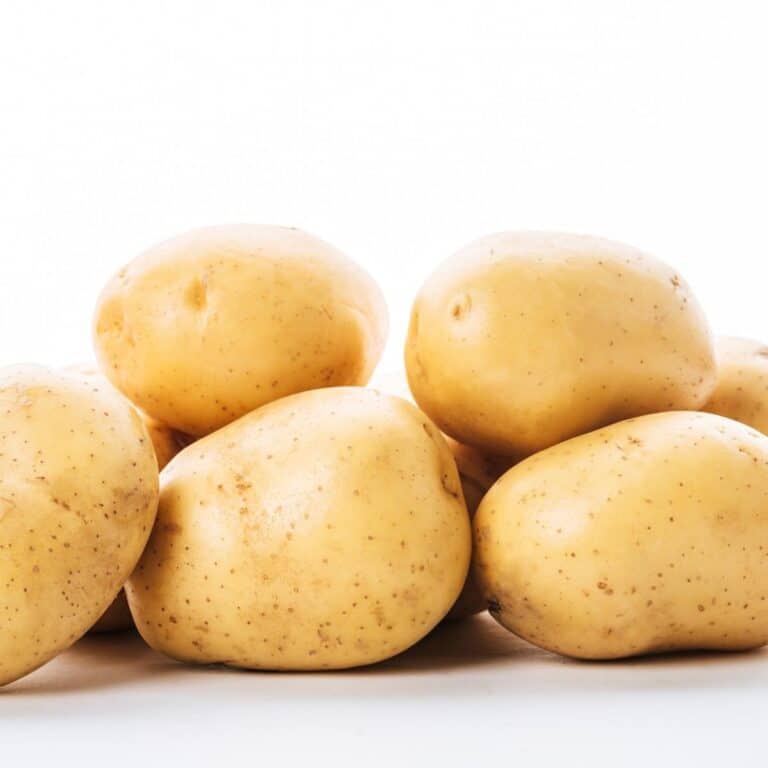

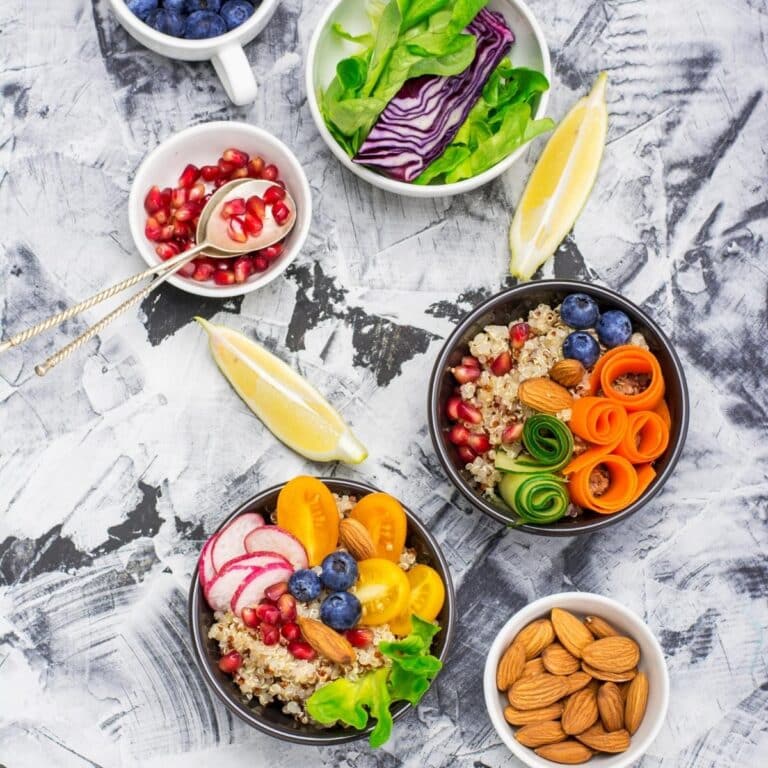
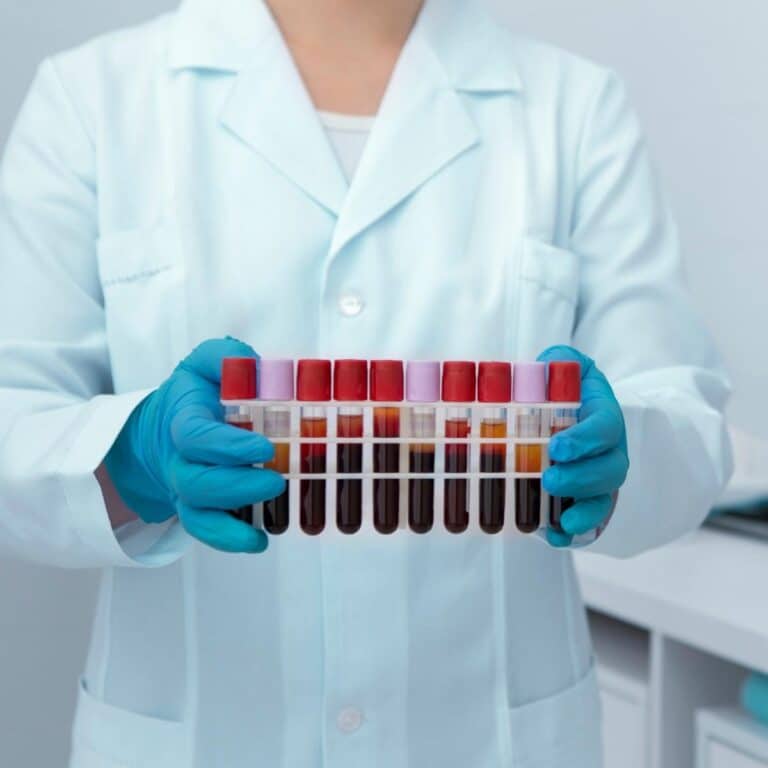
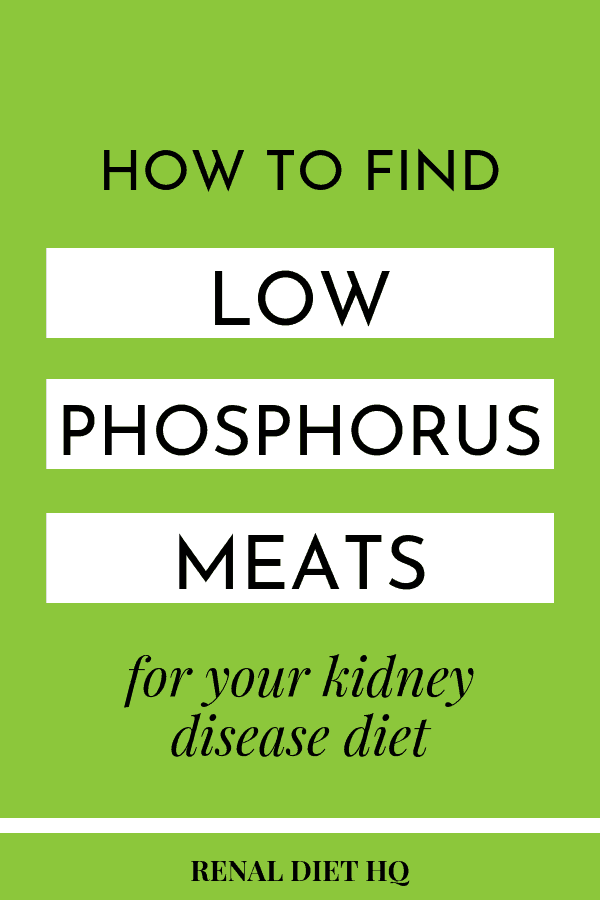
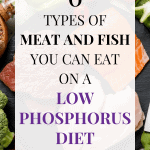

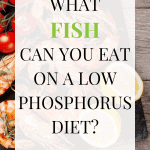
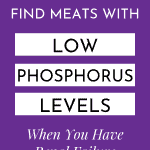
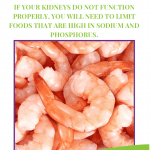
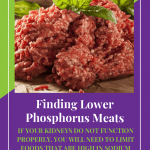
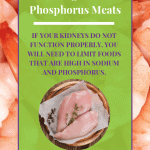



Will soaking tuna in water remove the phosates?